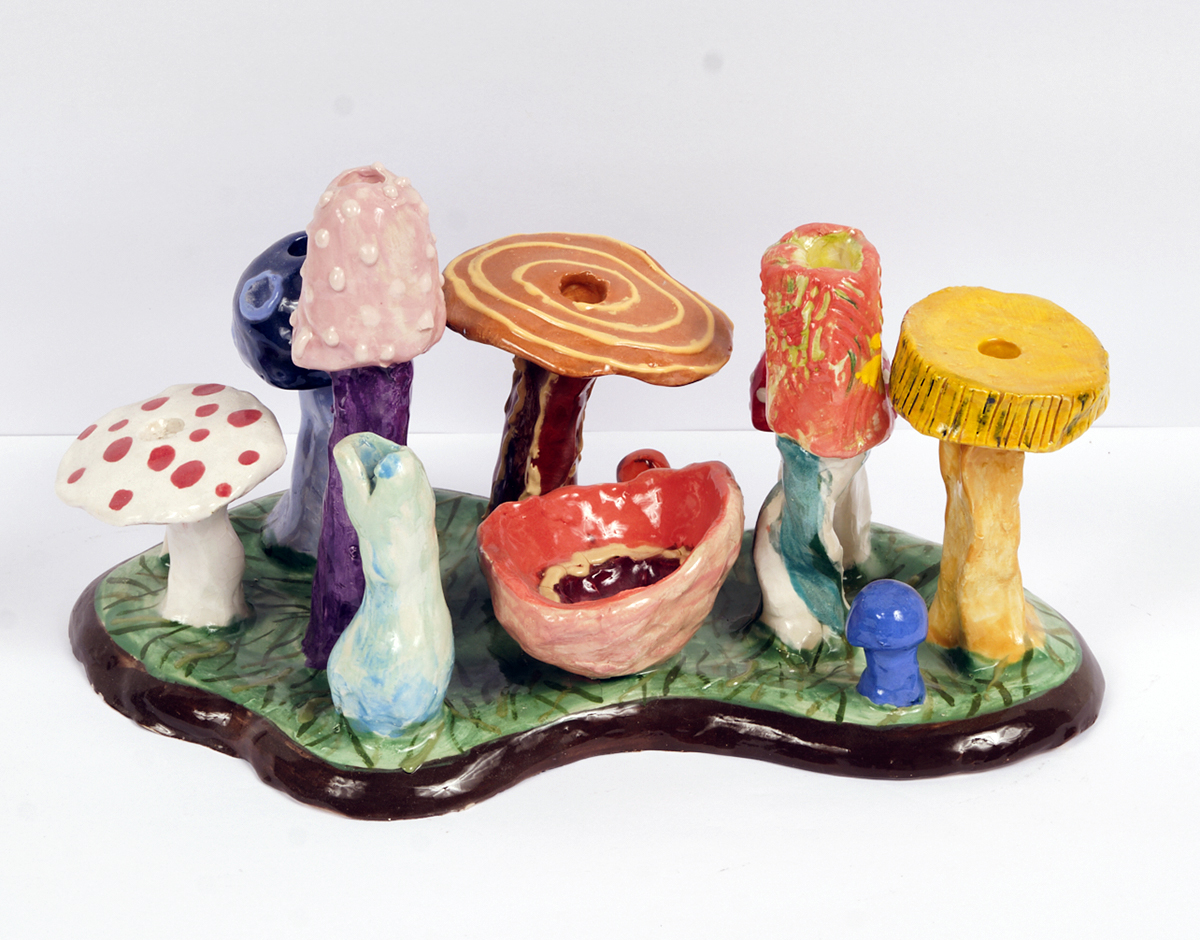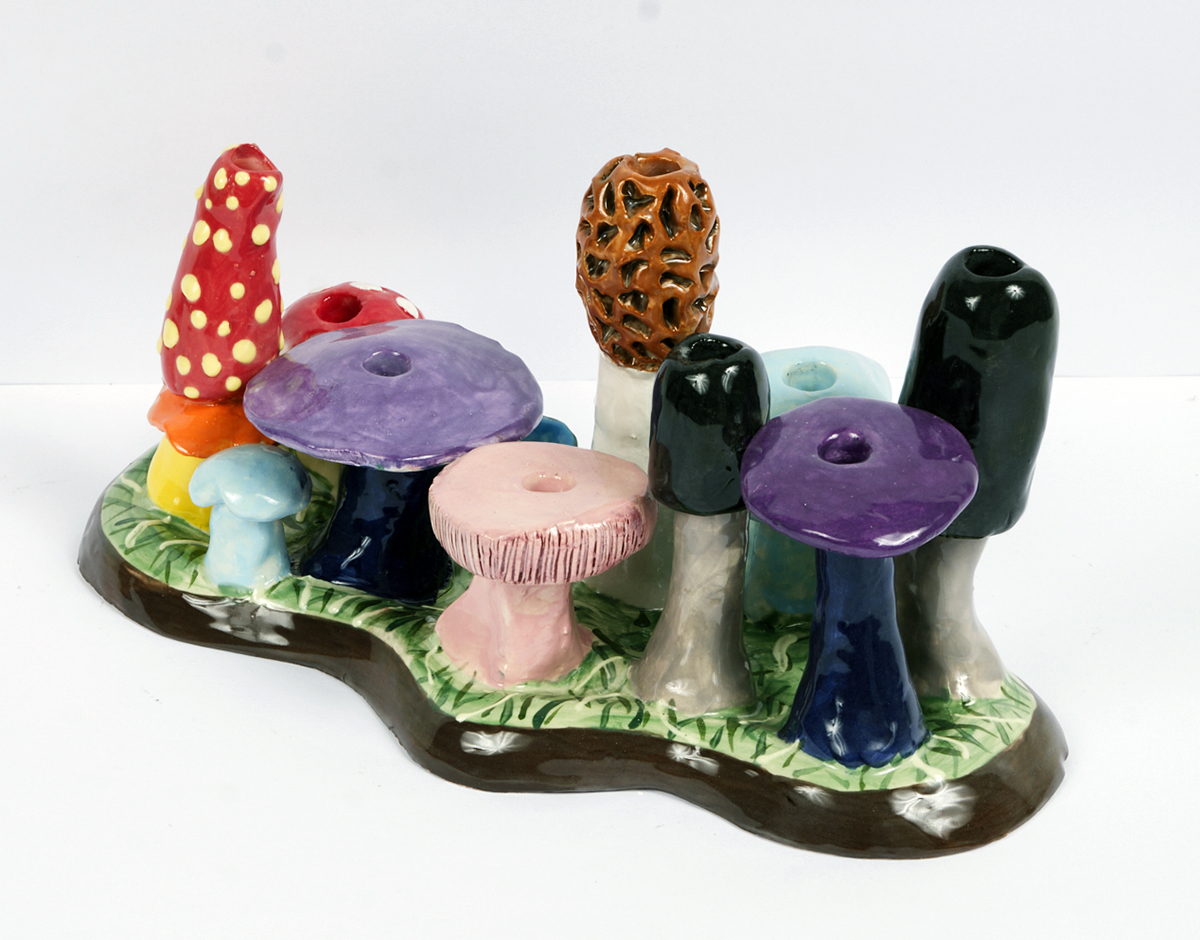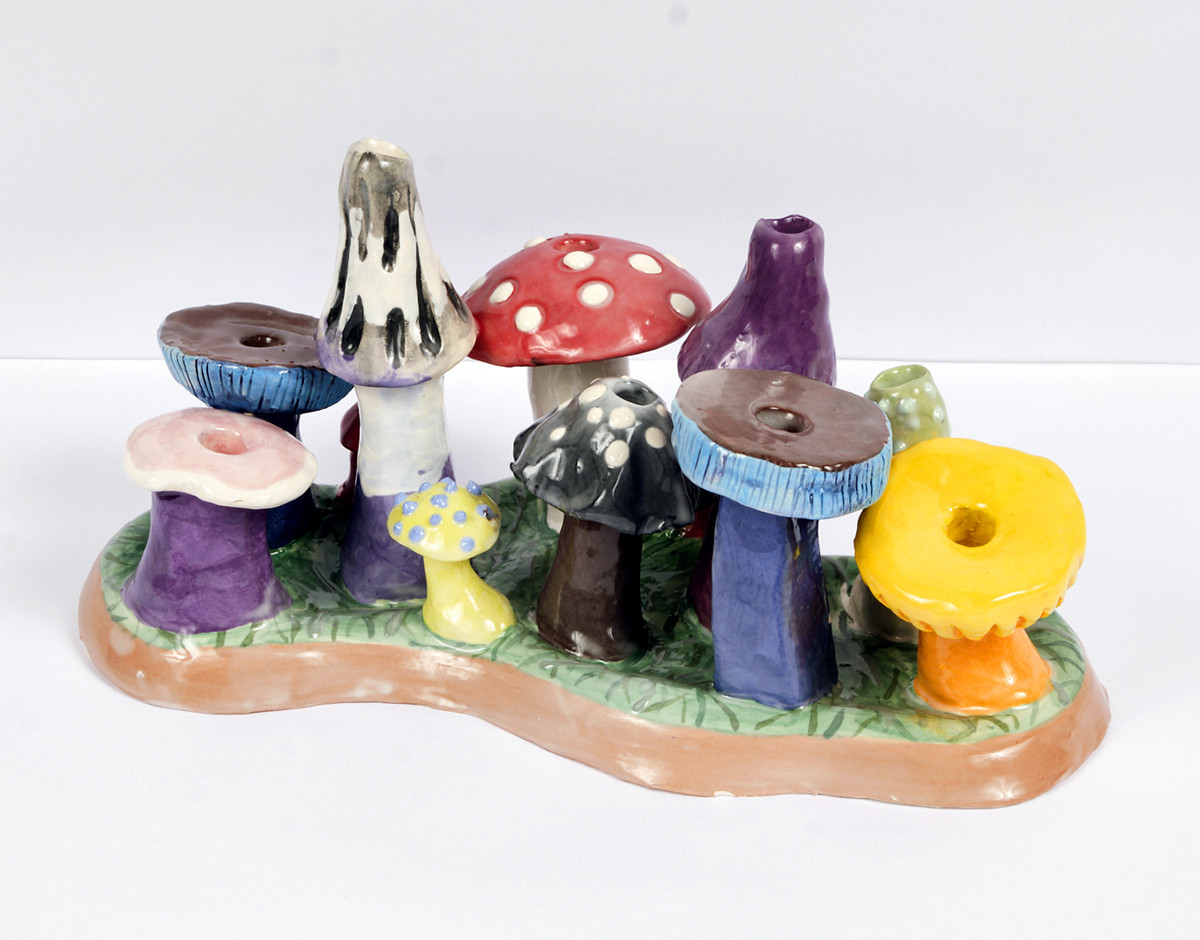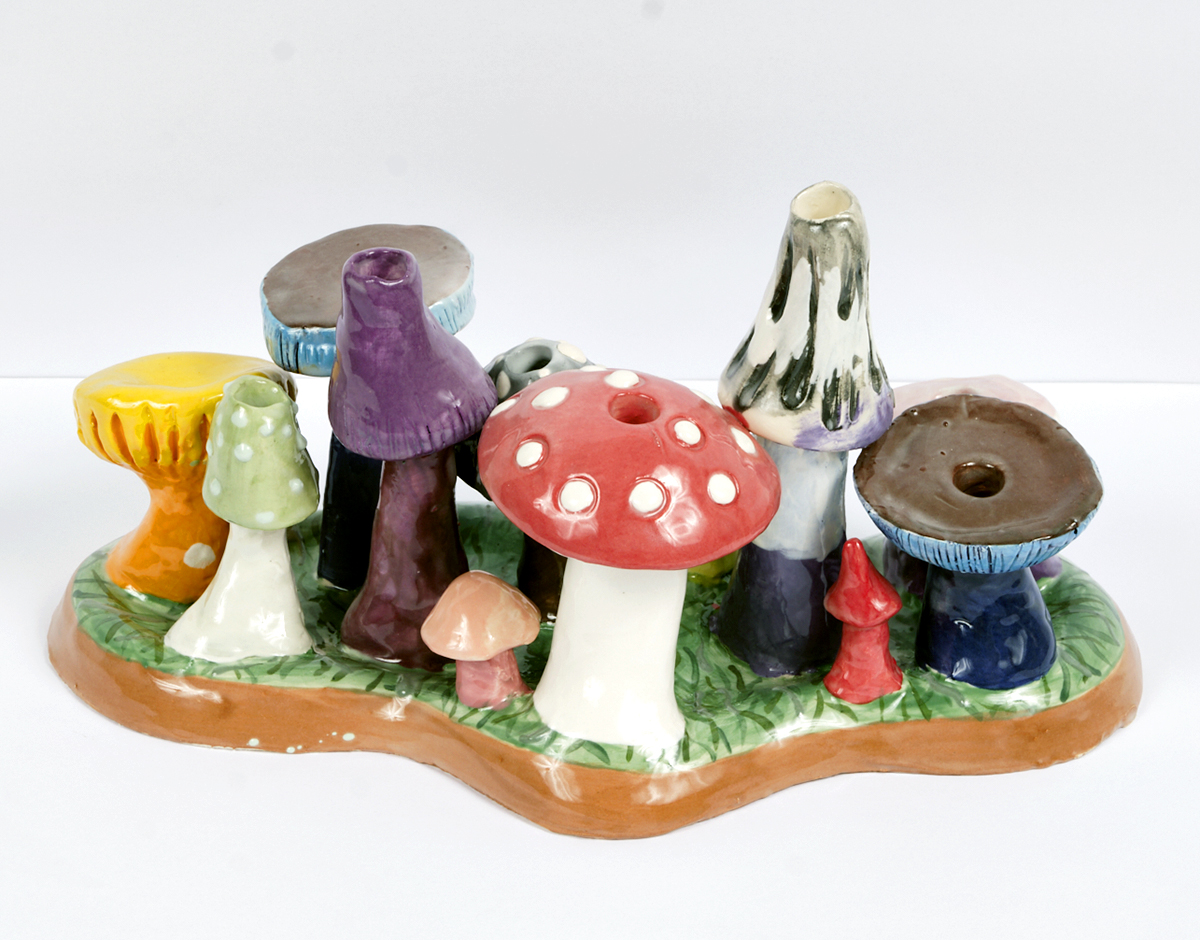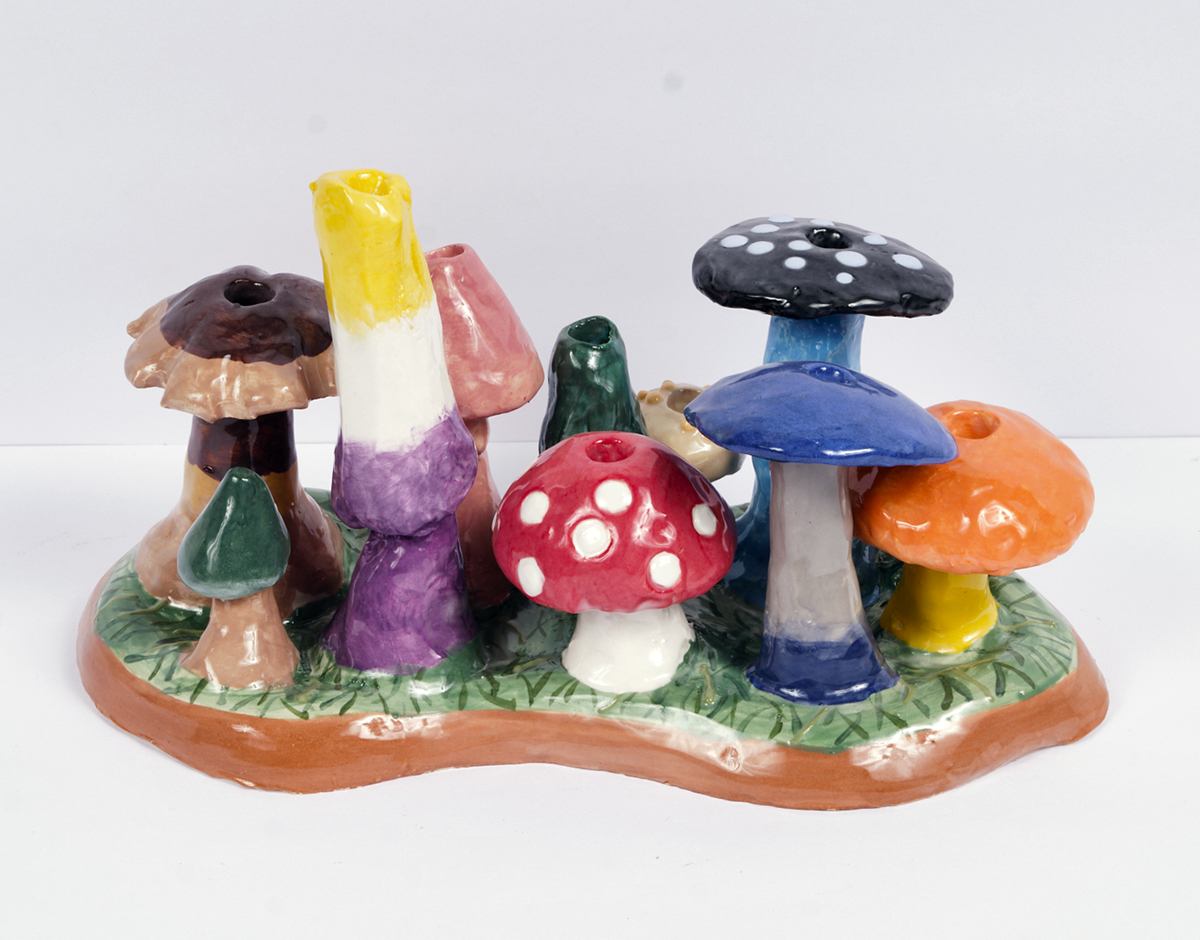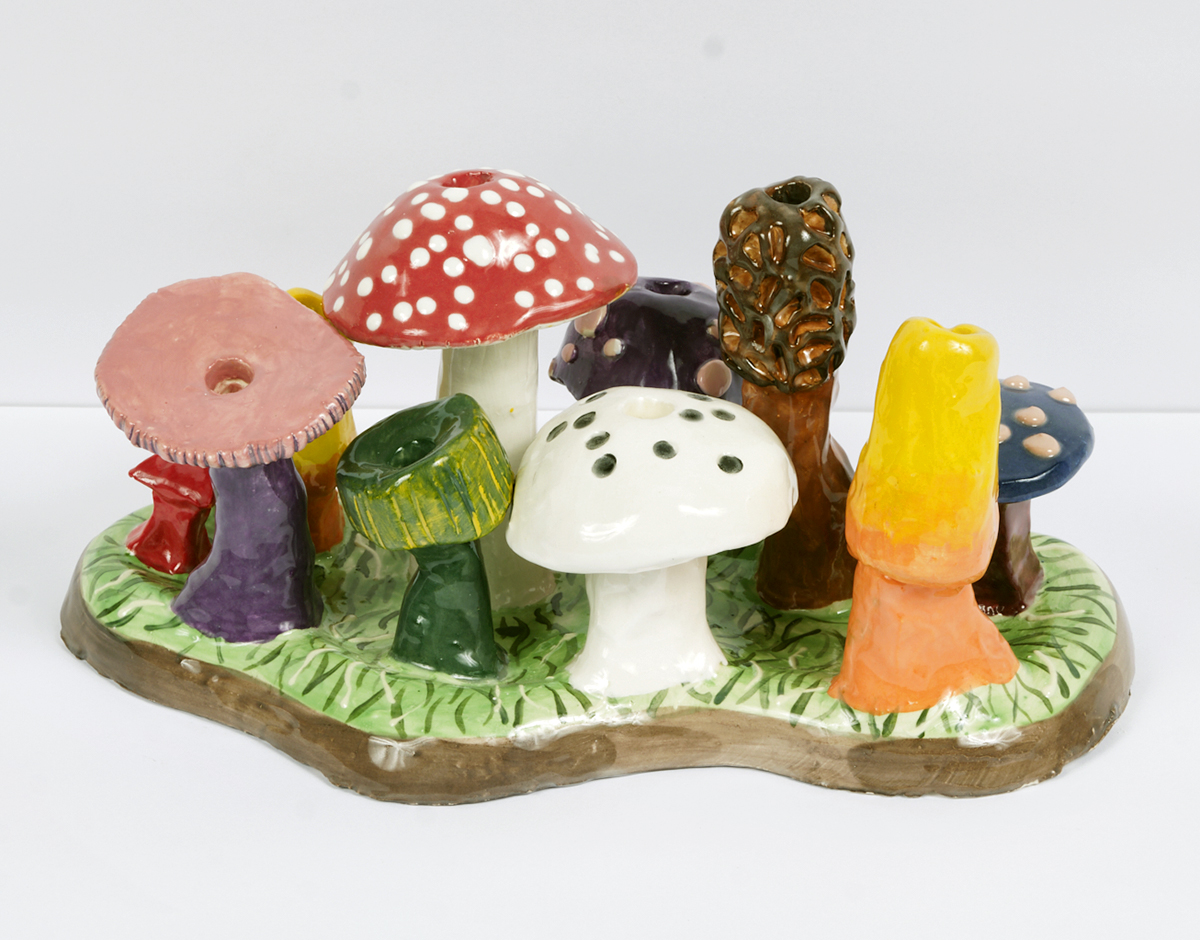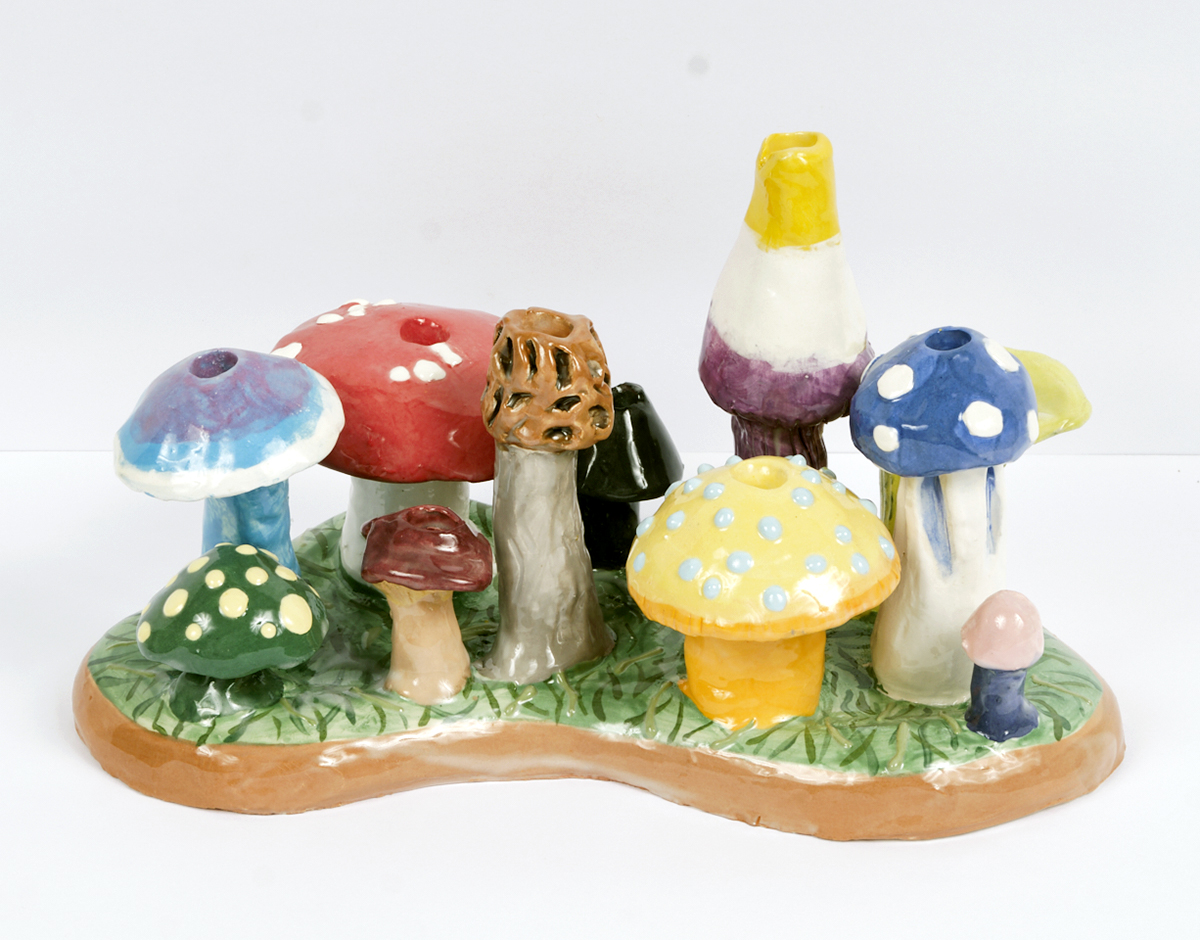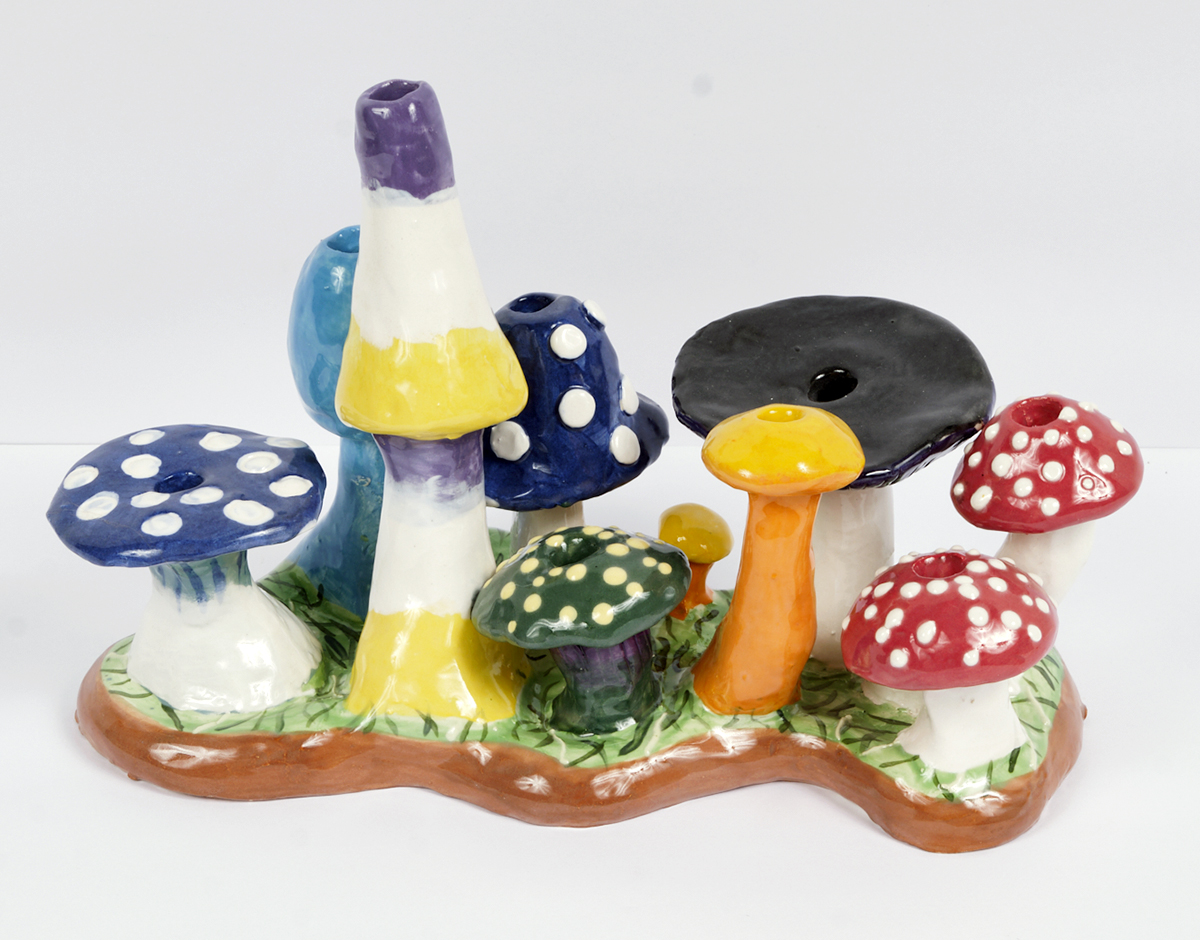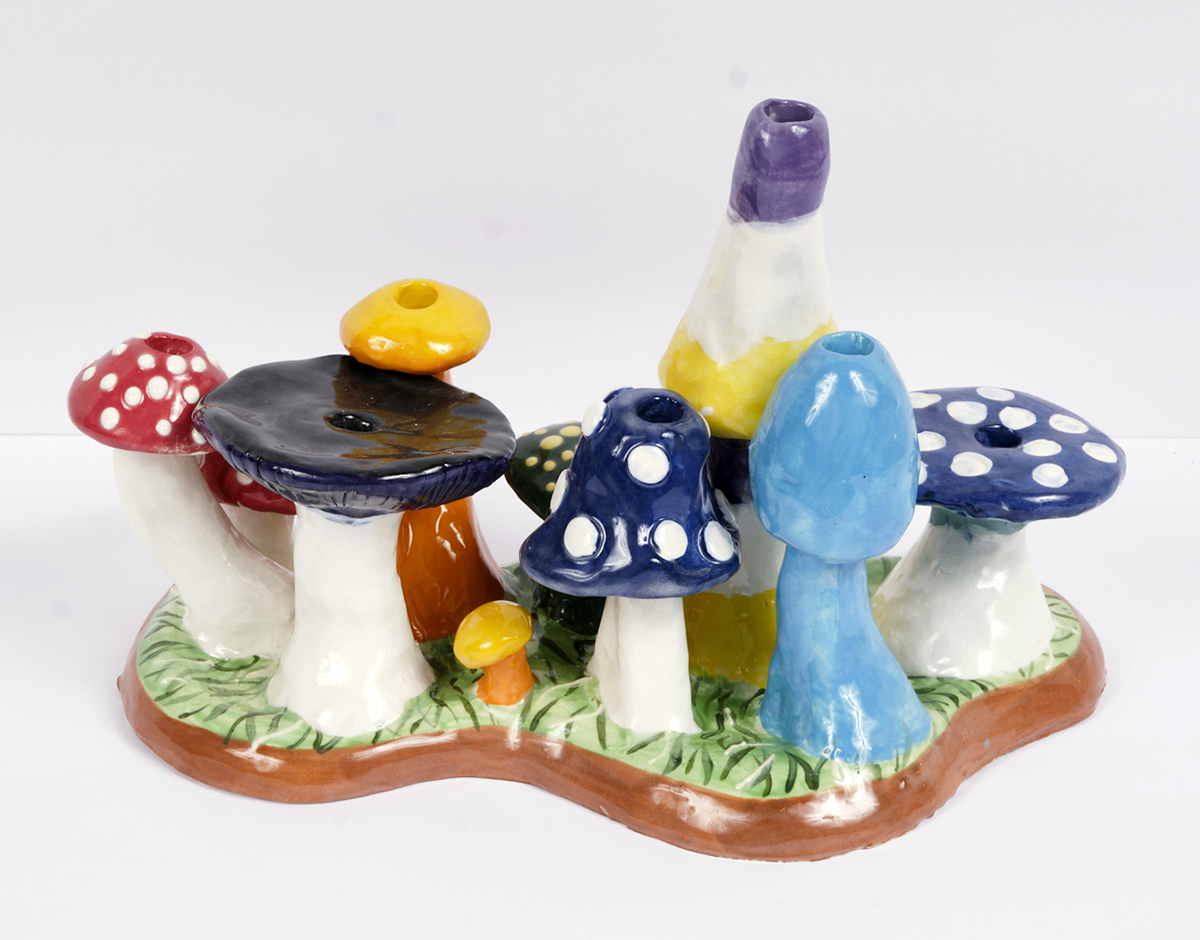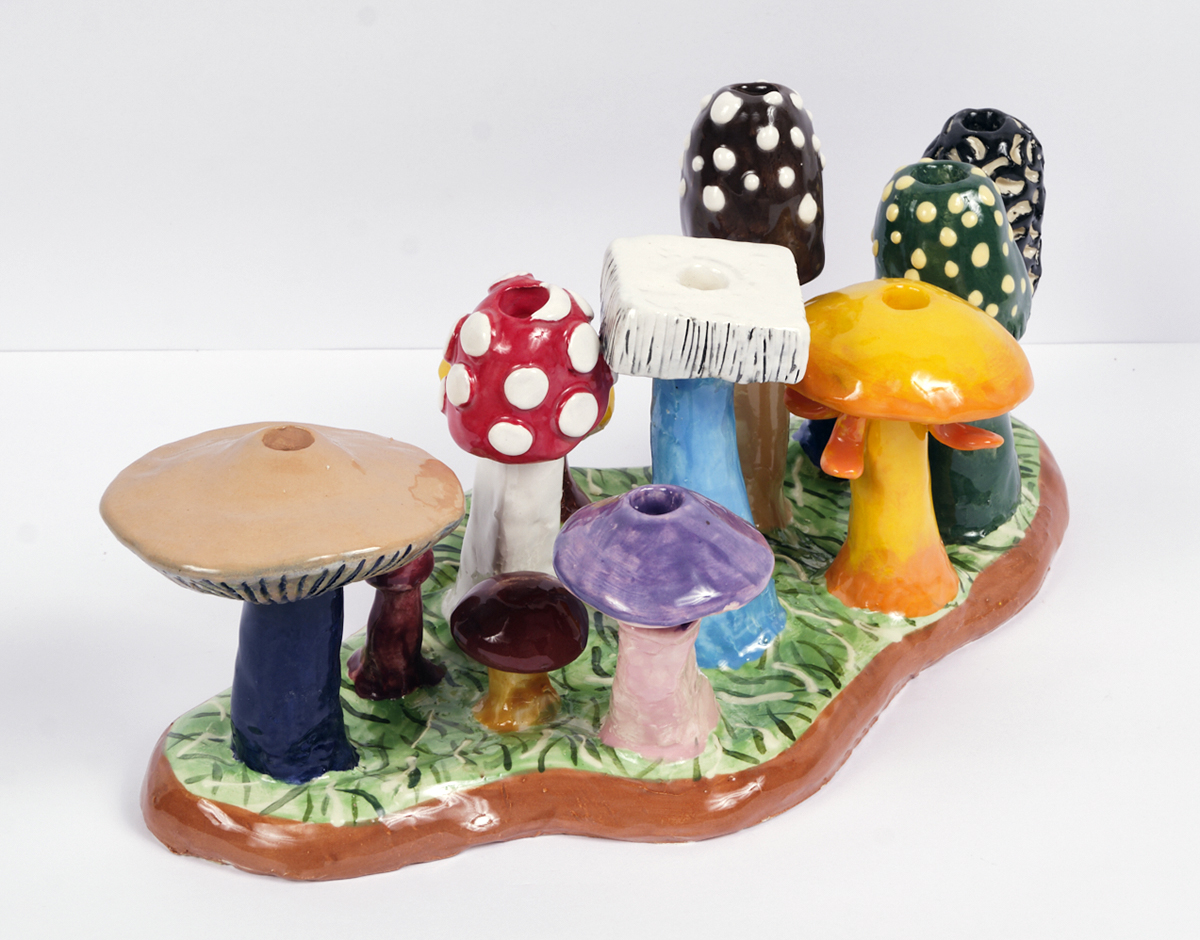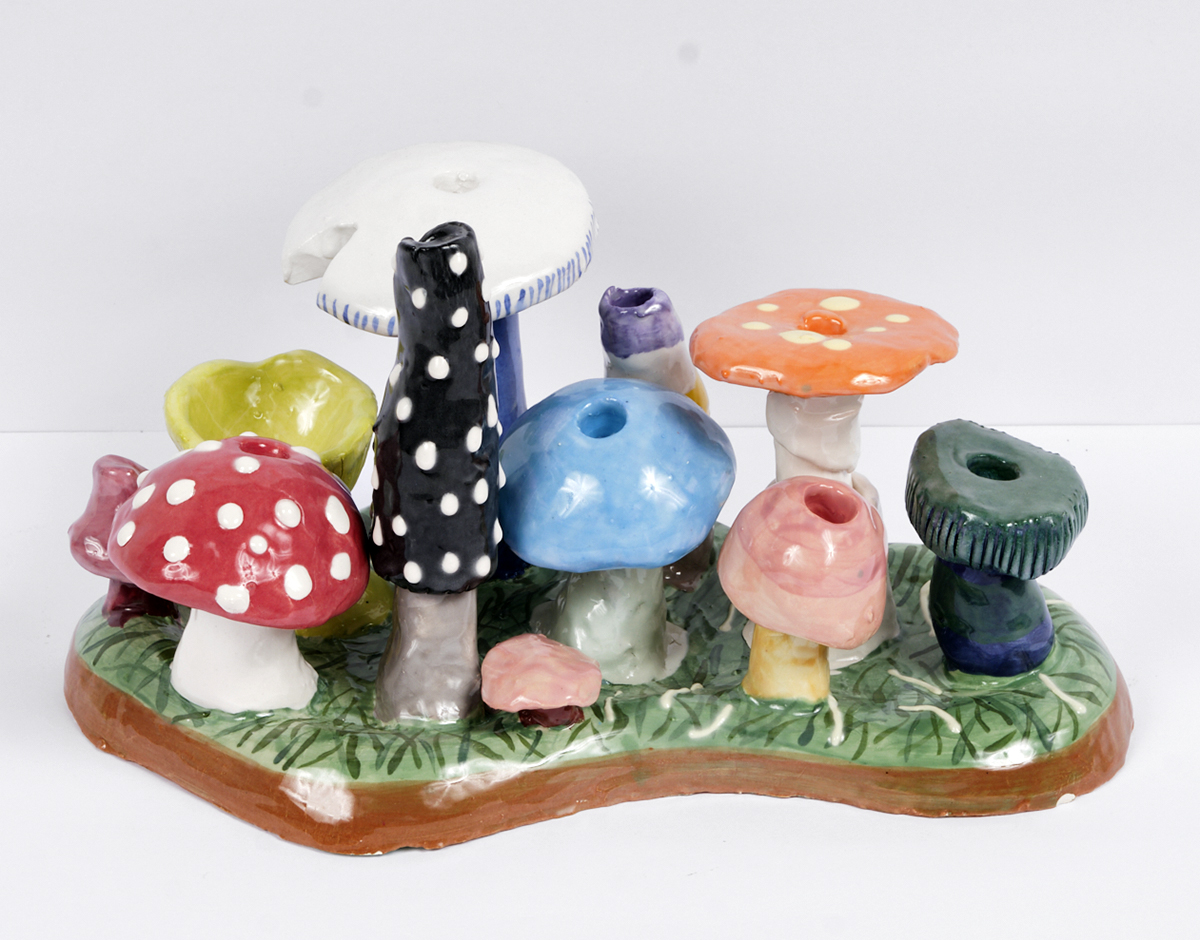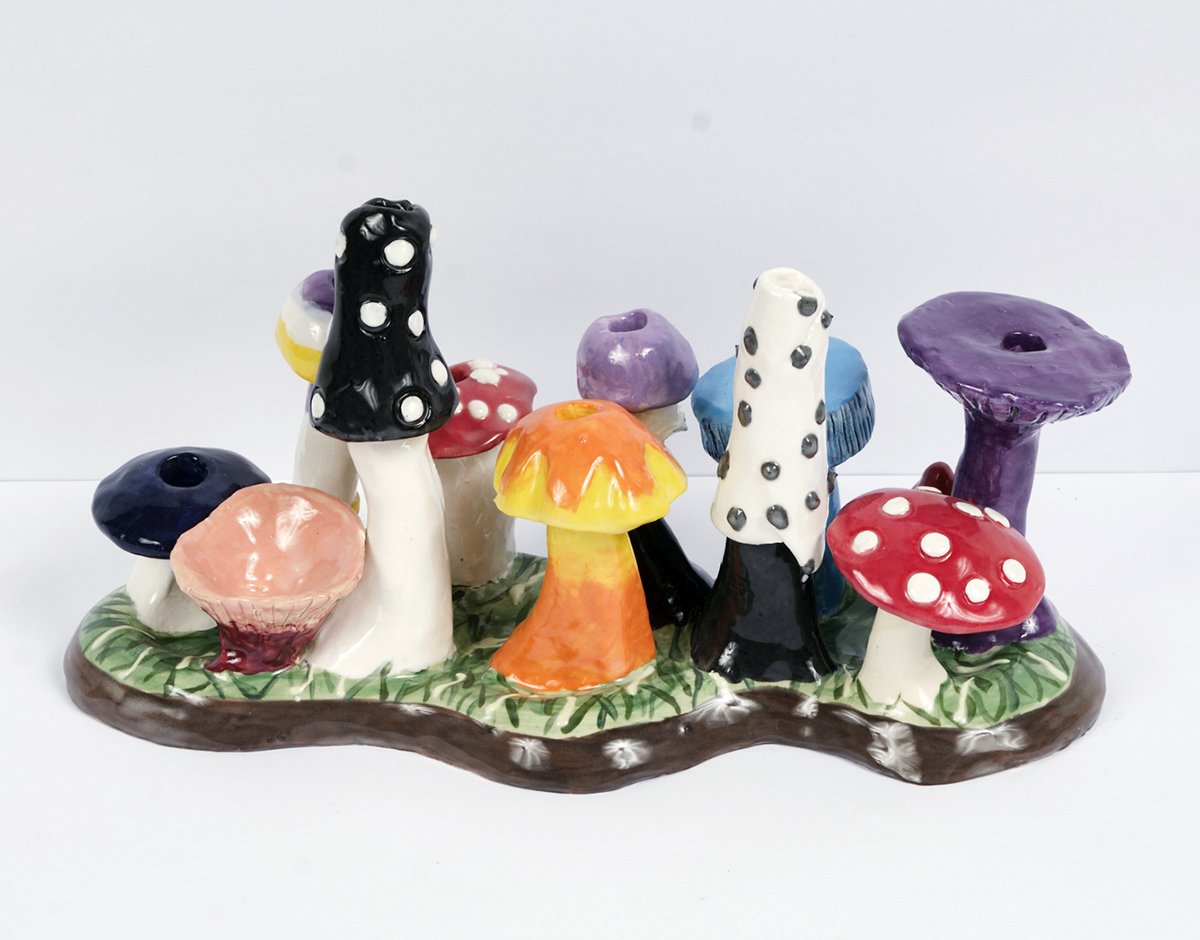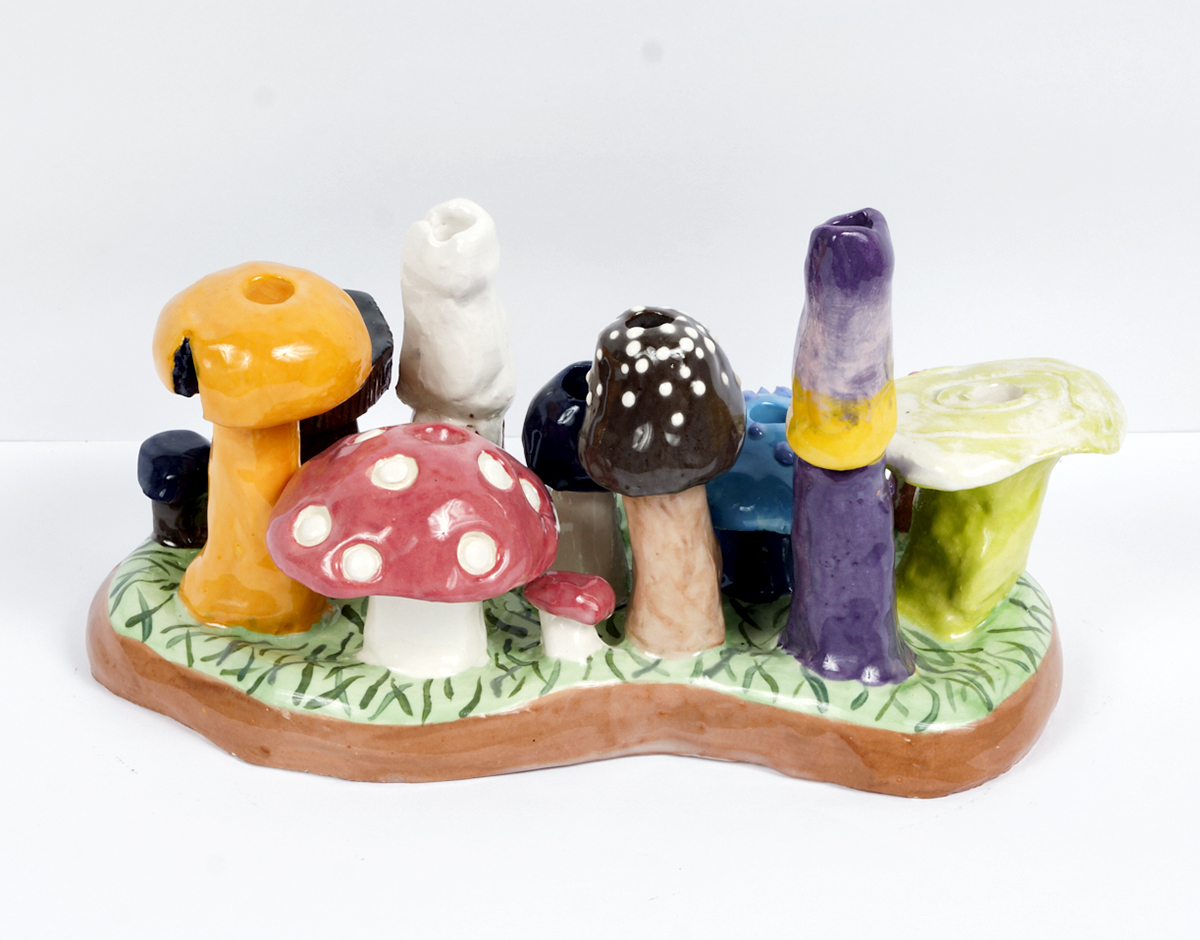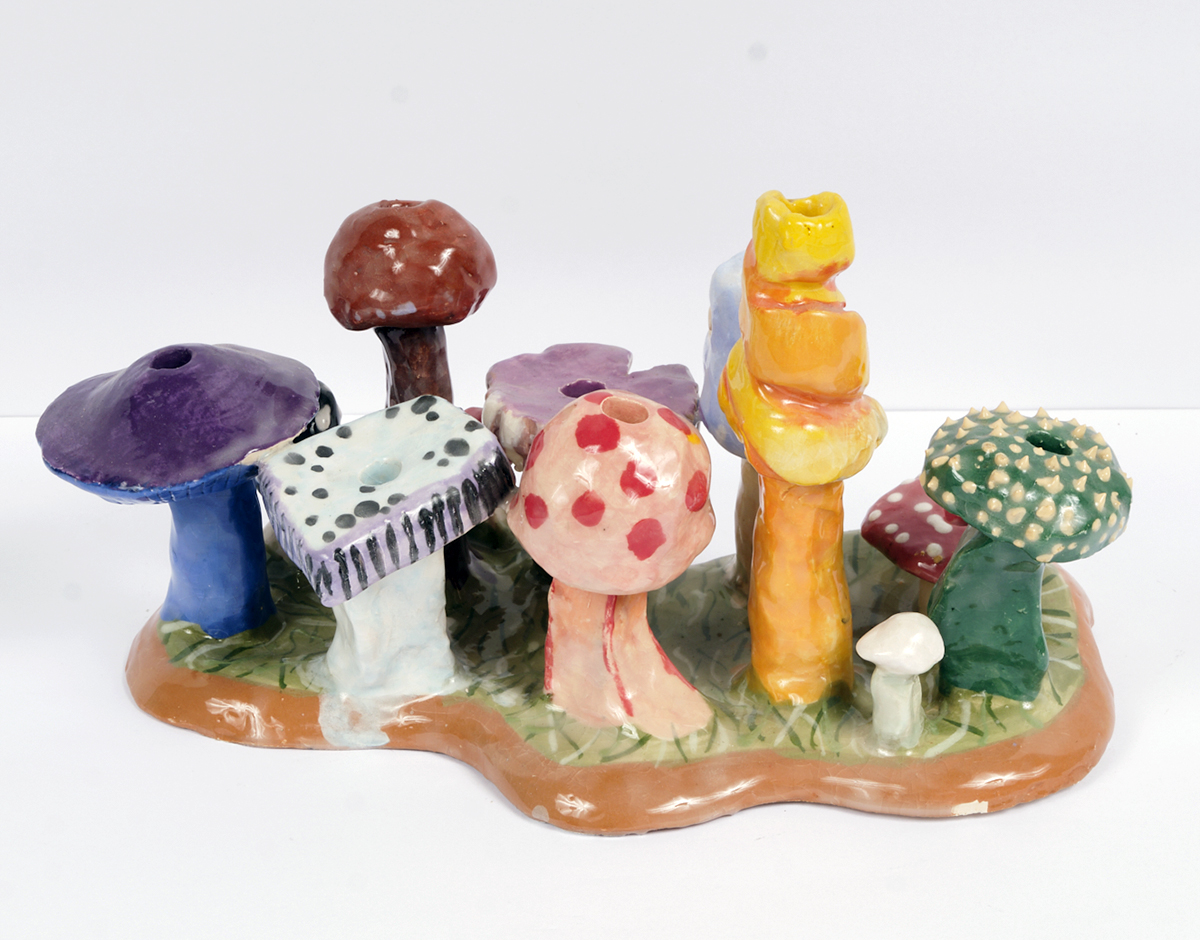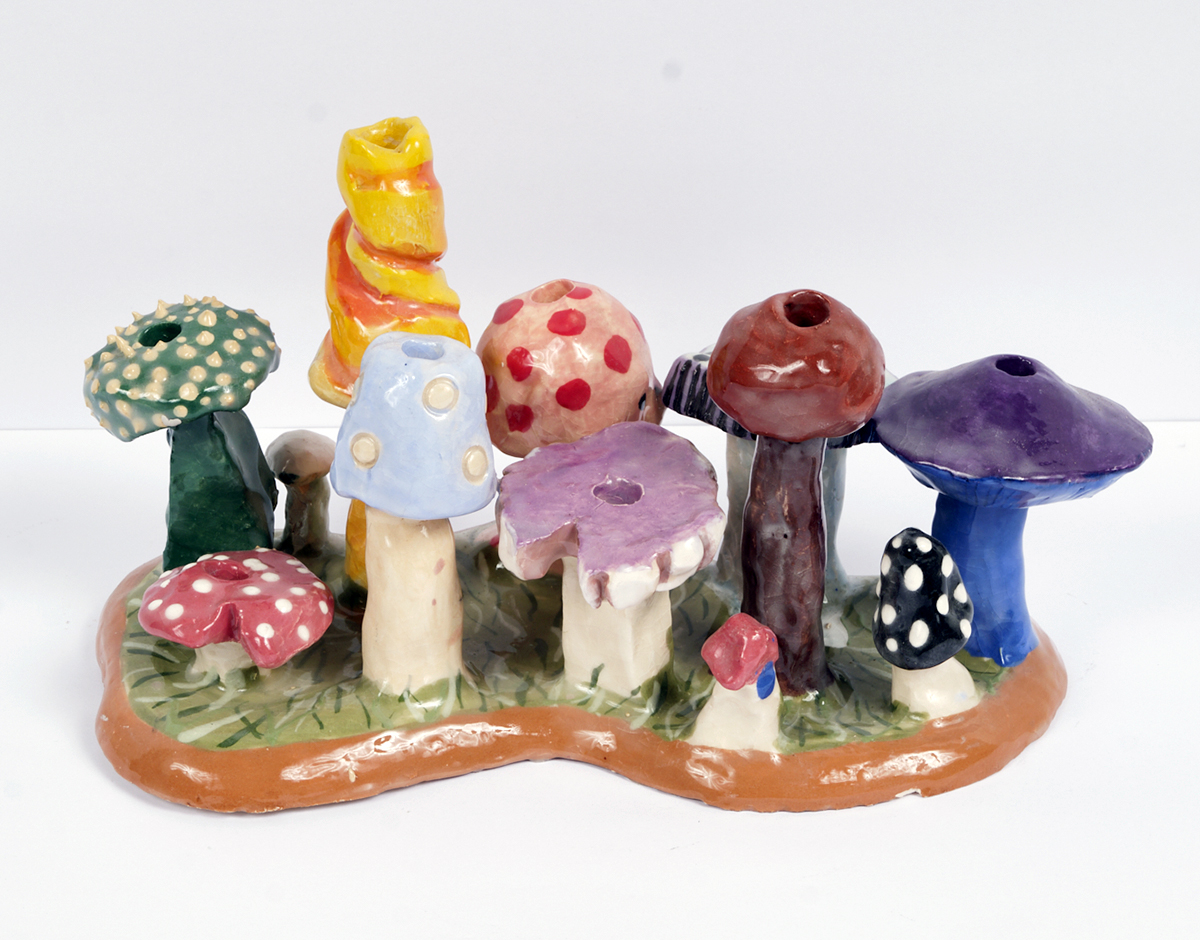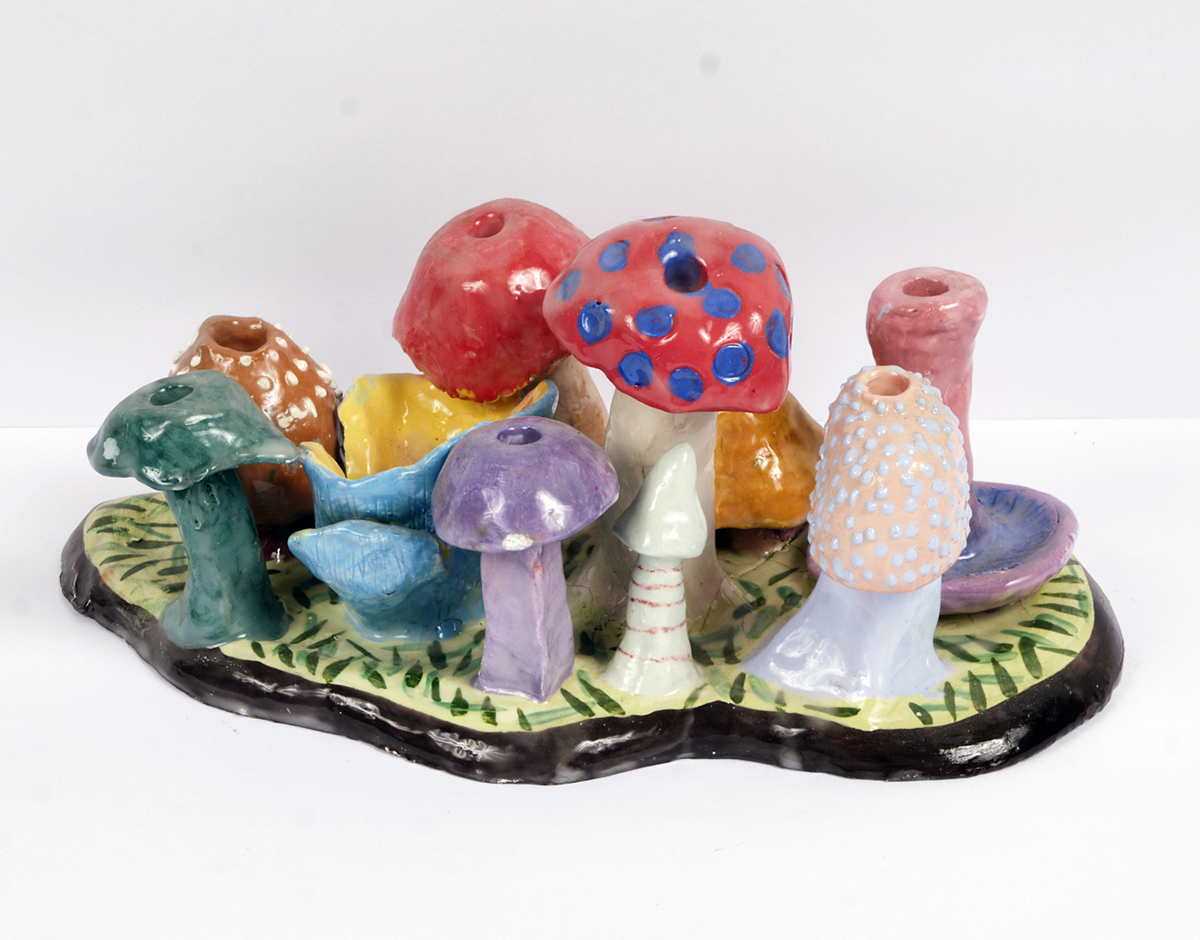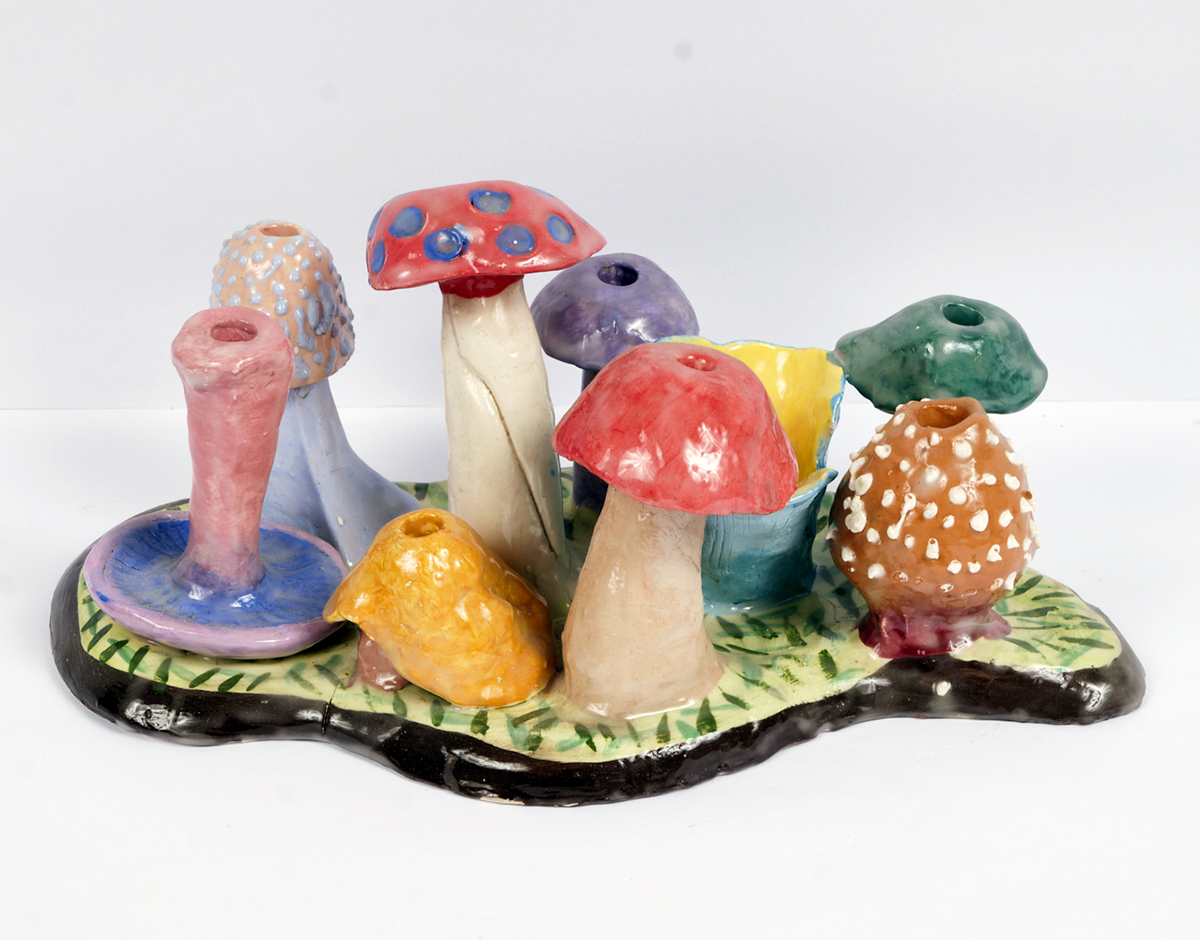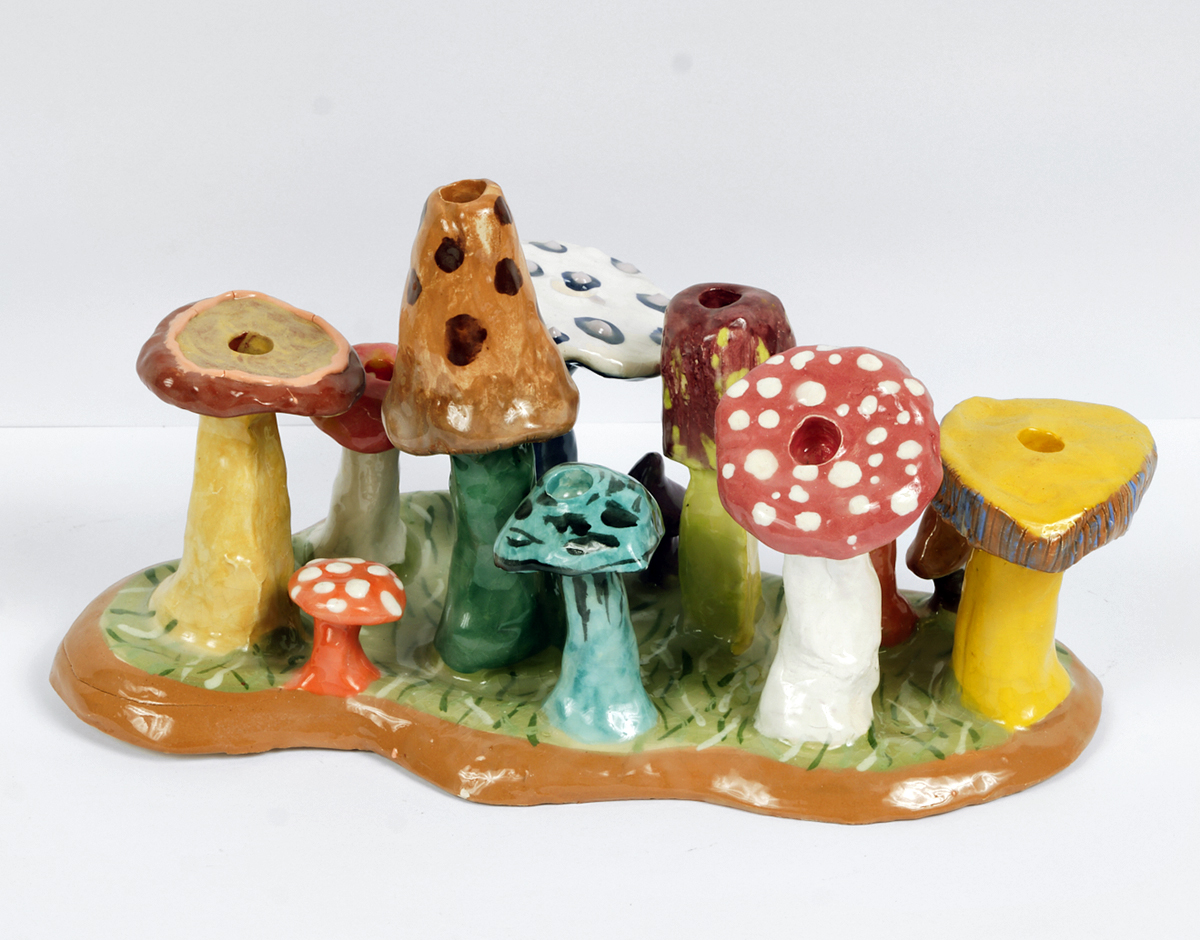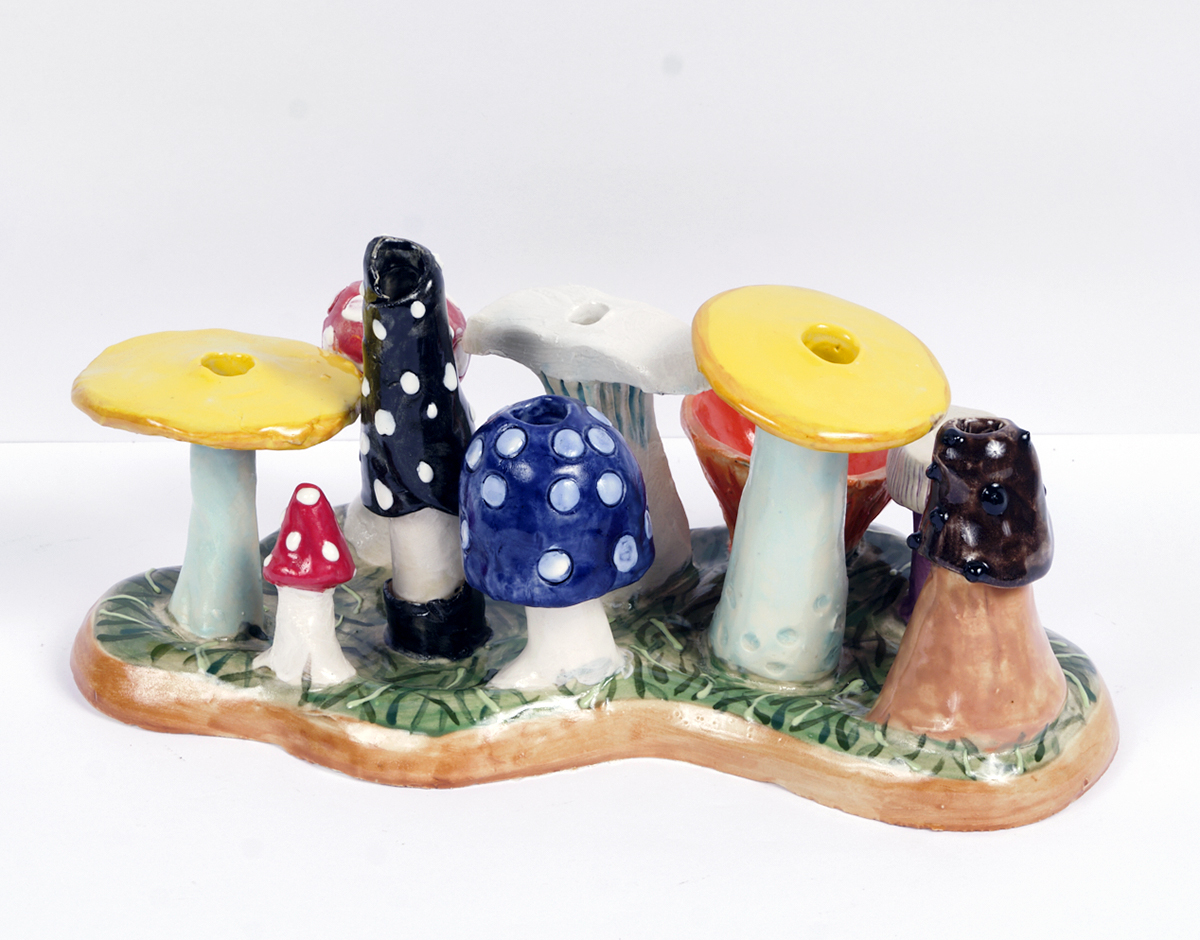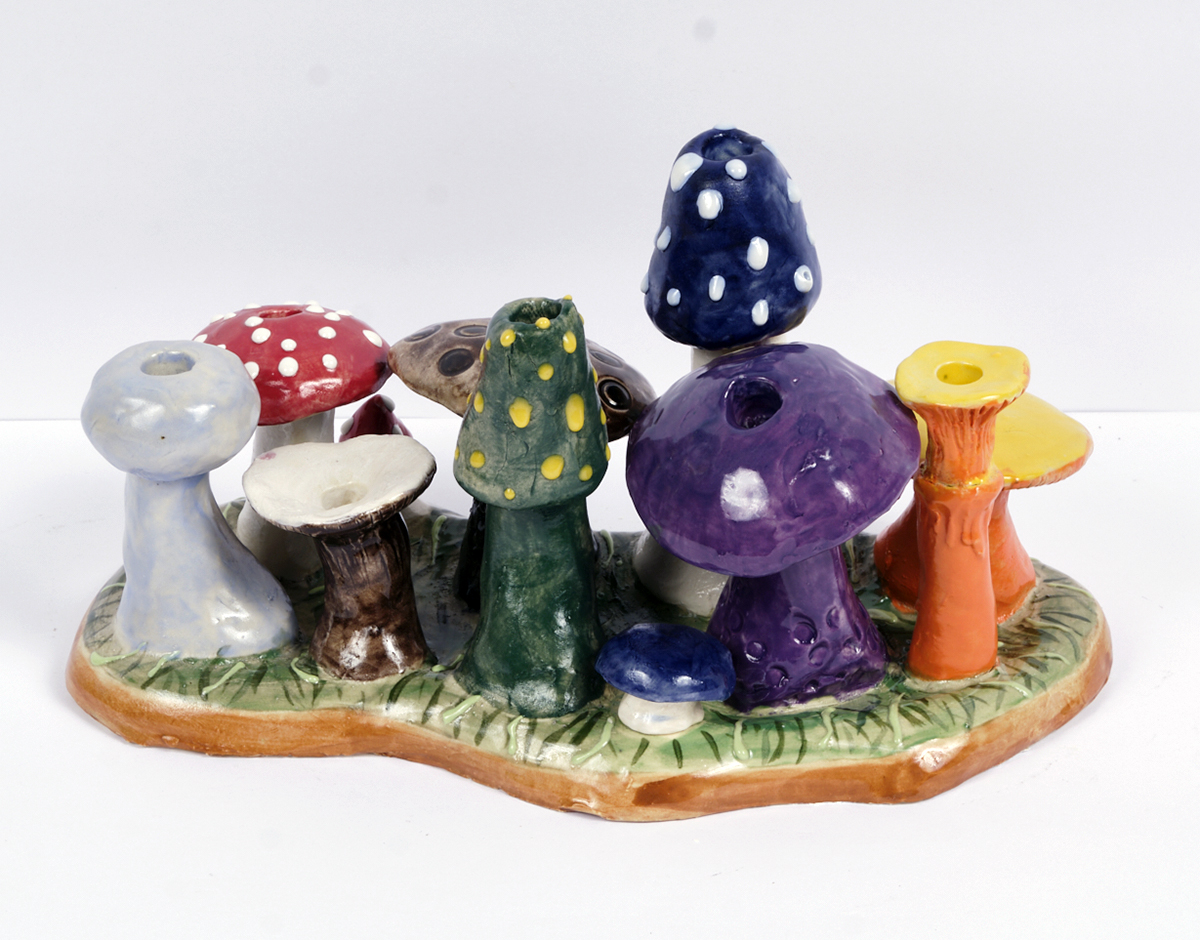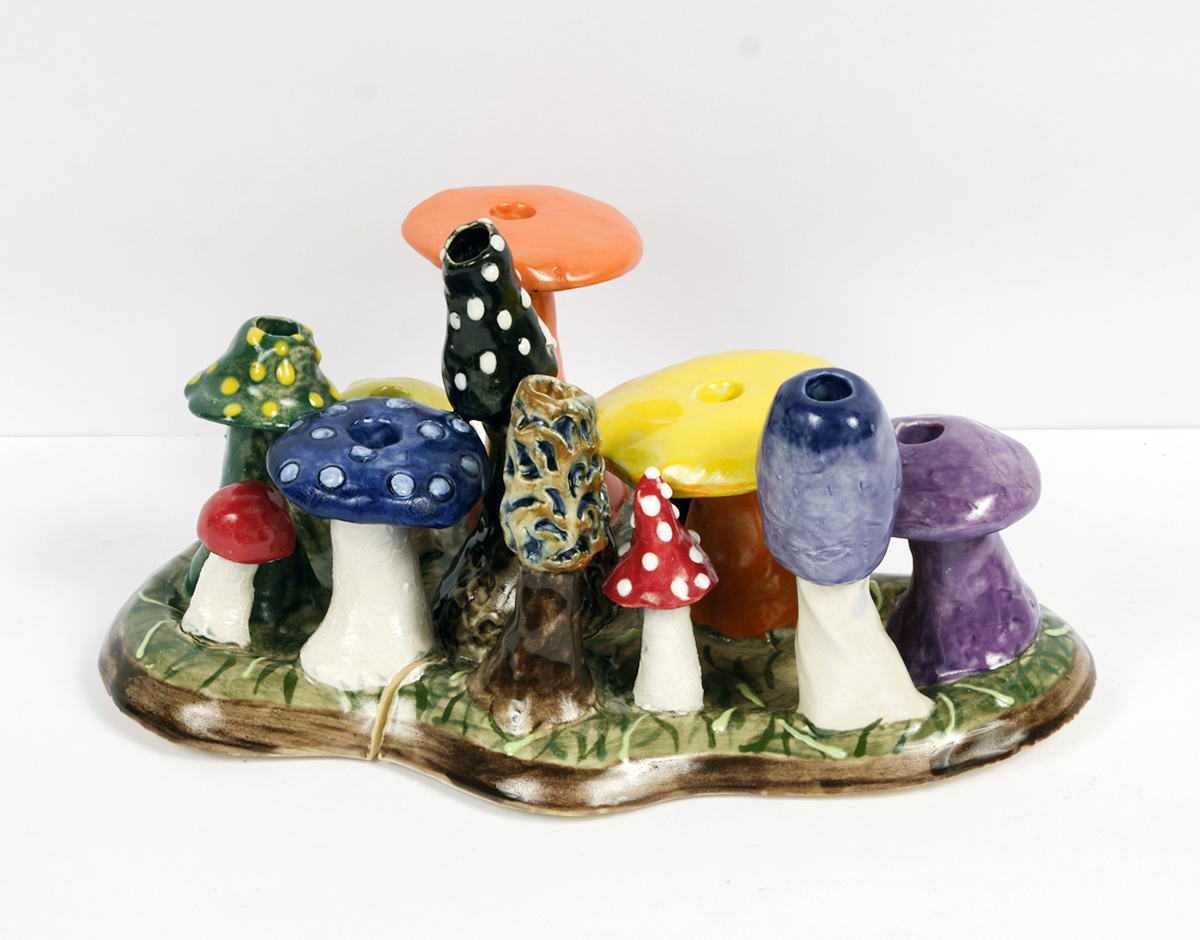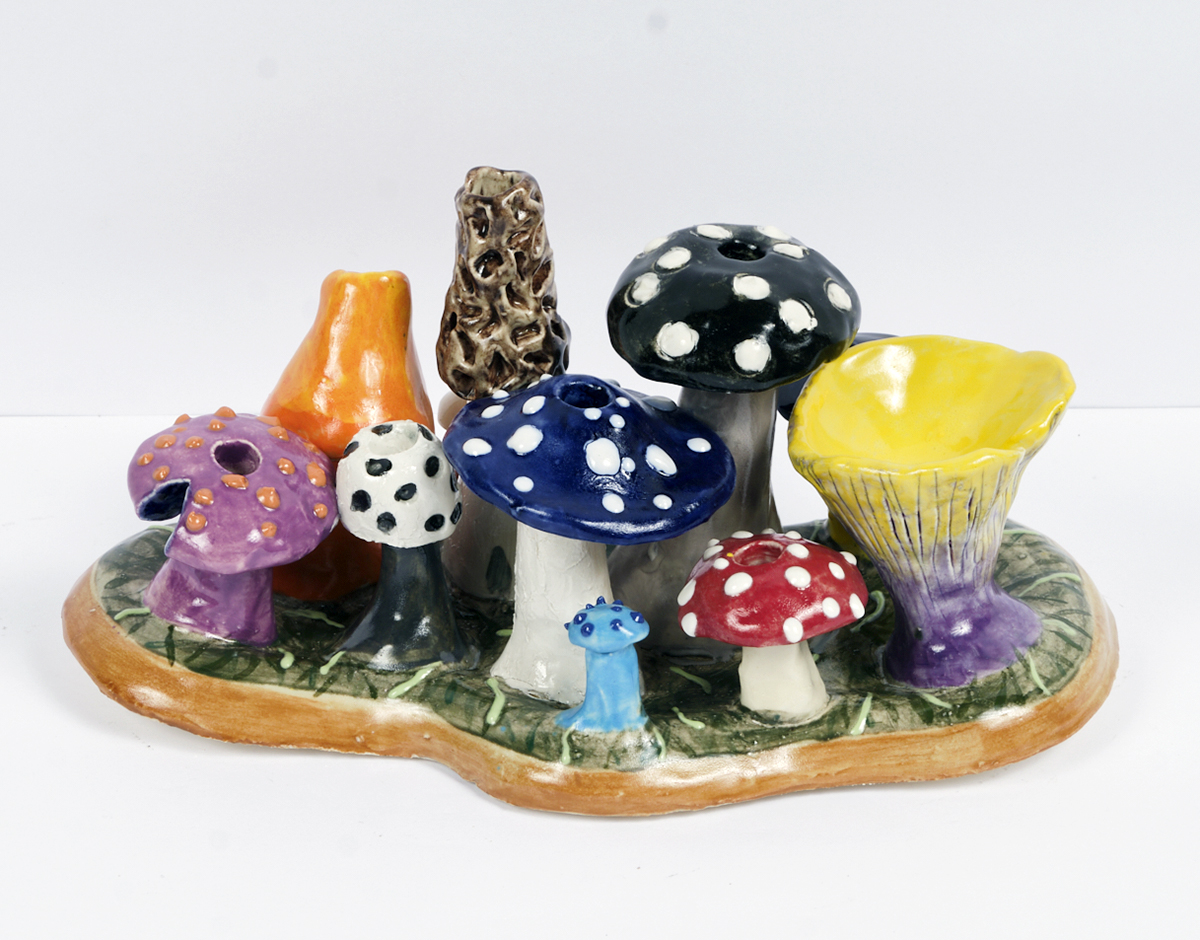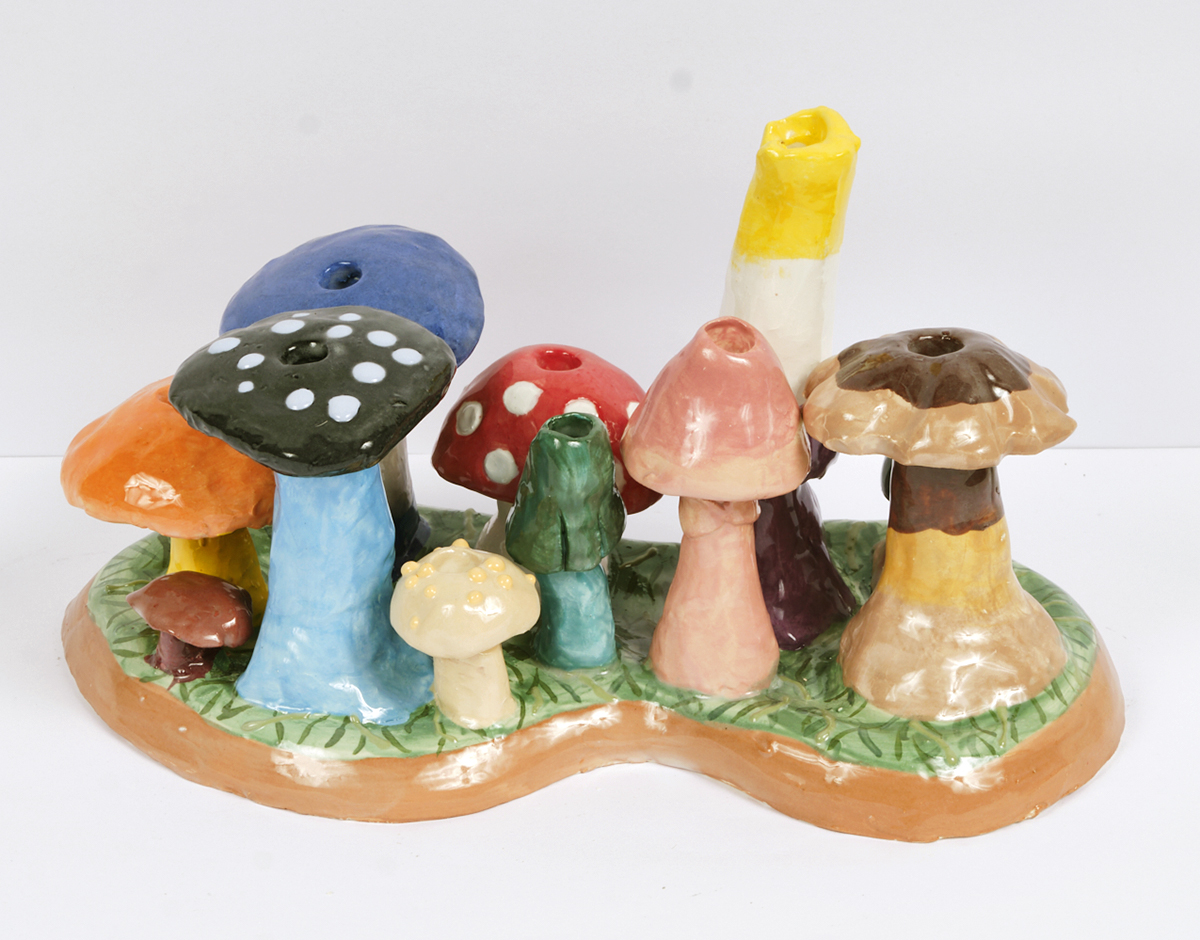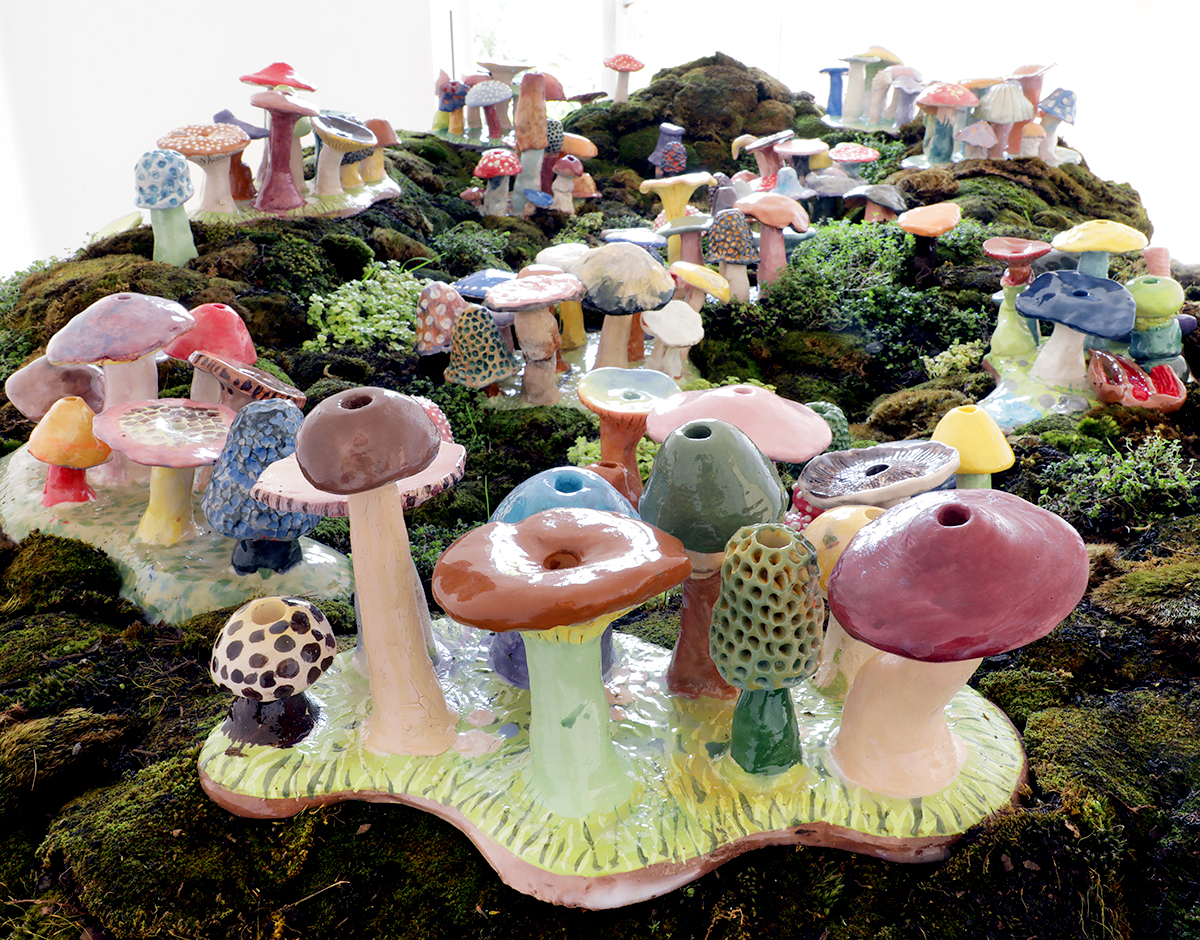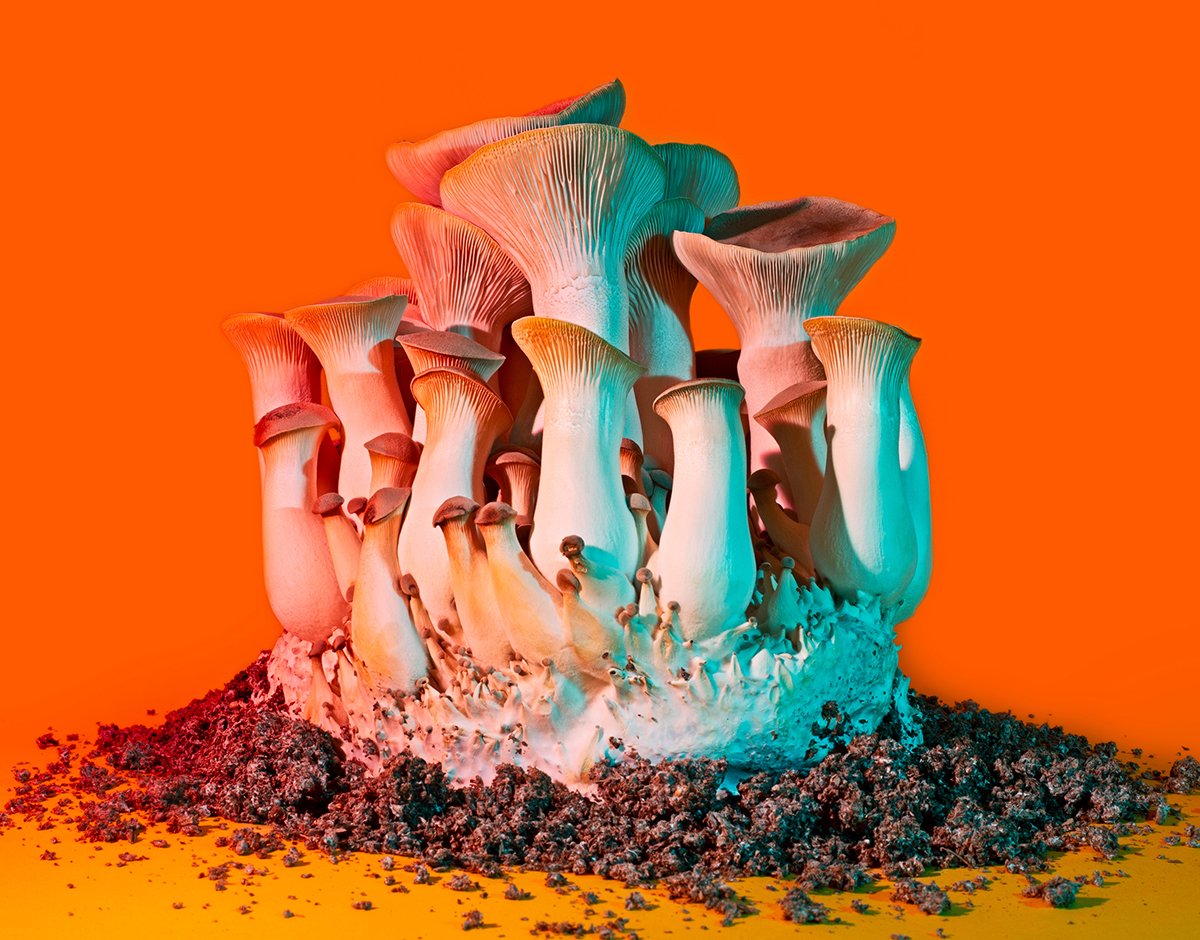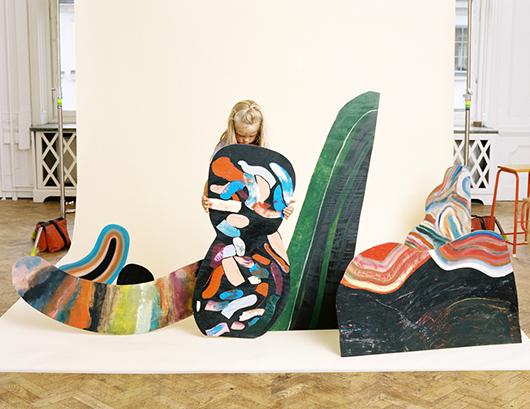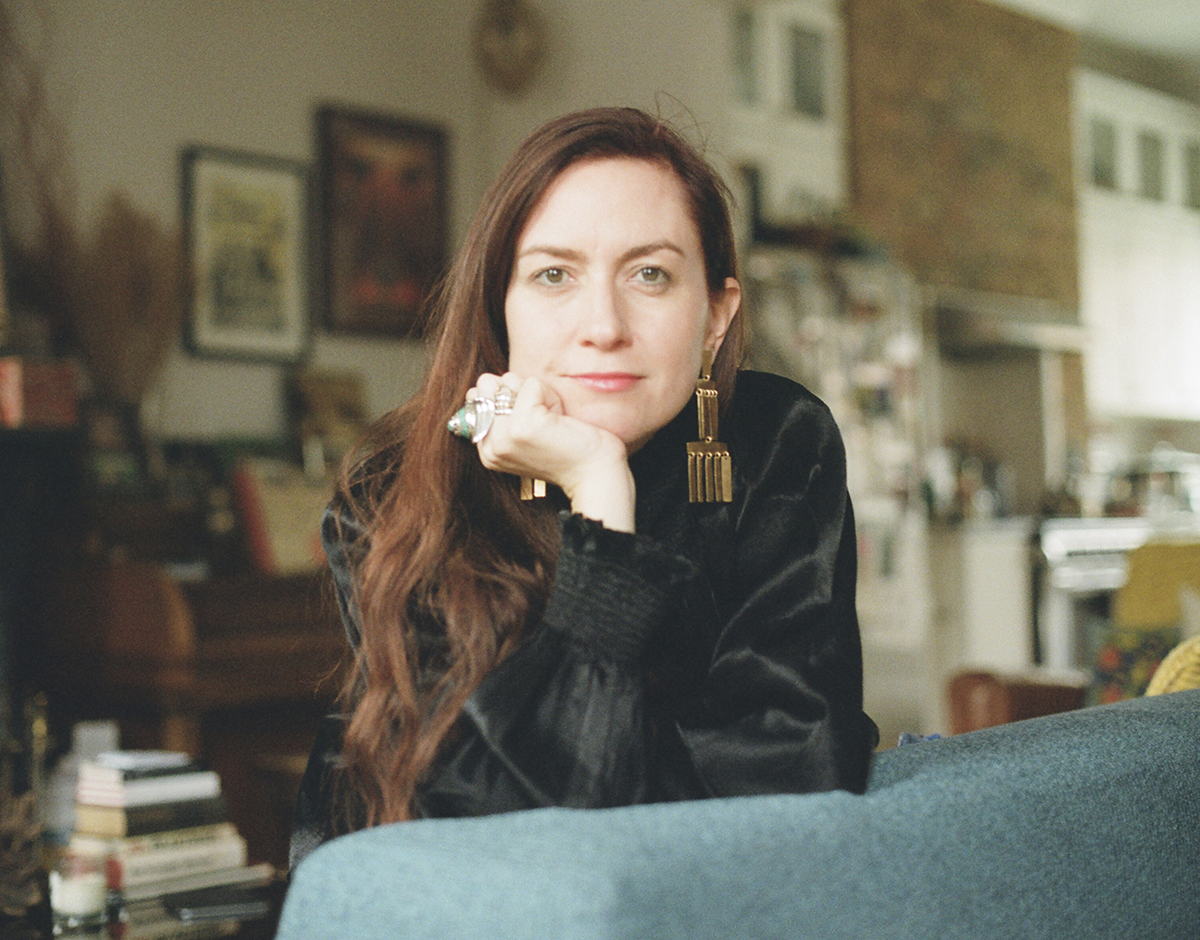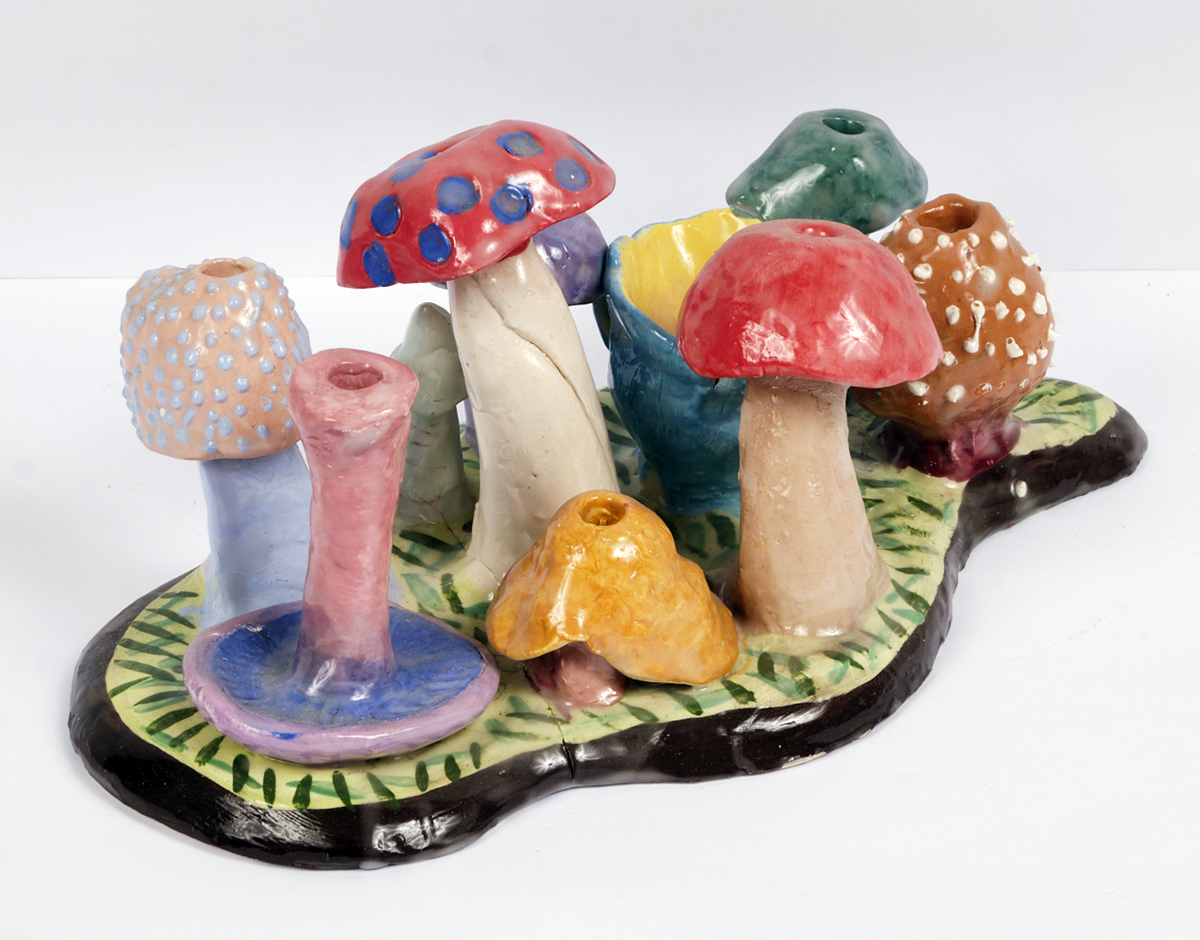
12.13.22
Sighted
Ben Wolf Noam’s Mushroom Menorahs Were Inspired By the Intersection of Judaism and Psychedelia
Earlier this year, a Jewish rabbi in Denver was arrested for allegedly cultivating magic mushrooms and using them in his synagogue’s prayer rituals. His defense? That mushrooms and other psychedelics have played an integral part in Judaism’s history for over 2,000 years, from the story of the burning bush to other weird prophetic visions described in Jewish scripture. Encapsulated in a school of thought called the Kabbalah, the belief in biblical mysticism isn’t shared by everyone, but its theories can be compelling — and in the case of L.A. artist Ben Wolf Noam, inspiring, too. He recently launched a collection of one-of-a-kind ceramic mushroom menorahs with The Future Perfect that reference the intersection of Judaism and psychedelia, not to mention making for wildly colorful centerpieces for your holiday table. We recently chatted with Noam about the series and its origins.
How did you get into ceramics?
I was first drawn to ceramics because of how universal and ancient it felt. Basically, since humans discovered fire, they’ve been throwing mud and dirt into that fire to make ceramics. Every culture in the world has participated in this tradition, from pre-Columbian figurines, to ancient Greek wine vessels, to Japanese teapots.
Why did you start making mushrooms in particular?
I love mushrooms! When I’m sculpting with my hands, squeezing a ball of clay in my palm, it naturally turns into a mushroom. I started out using these clay mushrooms to do my glaze tests, where you explore what it looks like to combine a specific type of clay body and glaze at different firing temperatures. All these factors affect what the final ceramics look like, so the process involves a lot of trial and error, and I ended up with a lot of glazed mushroom-like forms.
They began to speak to a longer interest I’ve had in mushroom species. In school at RISD, I worked at a place called The Nature Lab. It was an amazing library of natural curiosities where art students could check out specimens to draw or sculpt from. You could go and be inspired by taxidermied animals, skulls, crazy shaped plants, gems, and even two super-old turtles. While I worked there, I would forage mushrooms in the woods for the collection, and then I started their first grow operation out of sawdust bags. I loved drawing the forms, bright colors, and patterns. I became the de facto mushroom guy.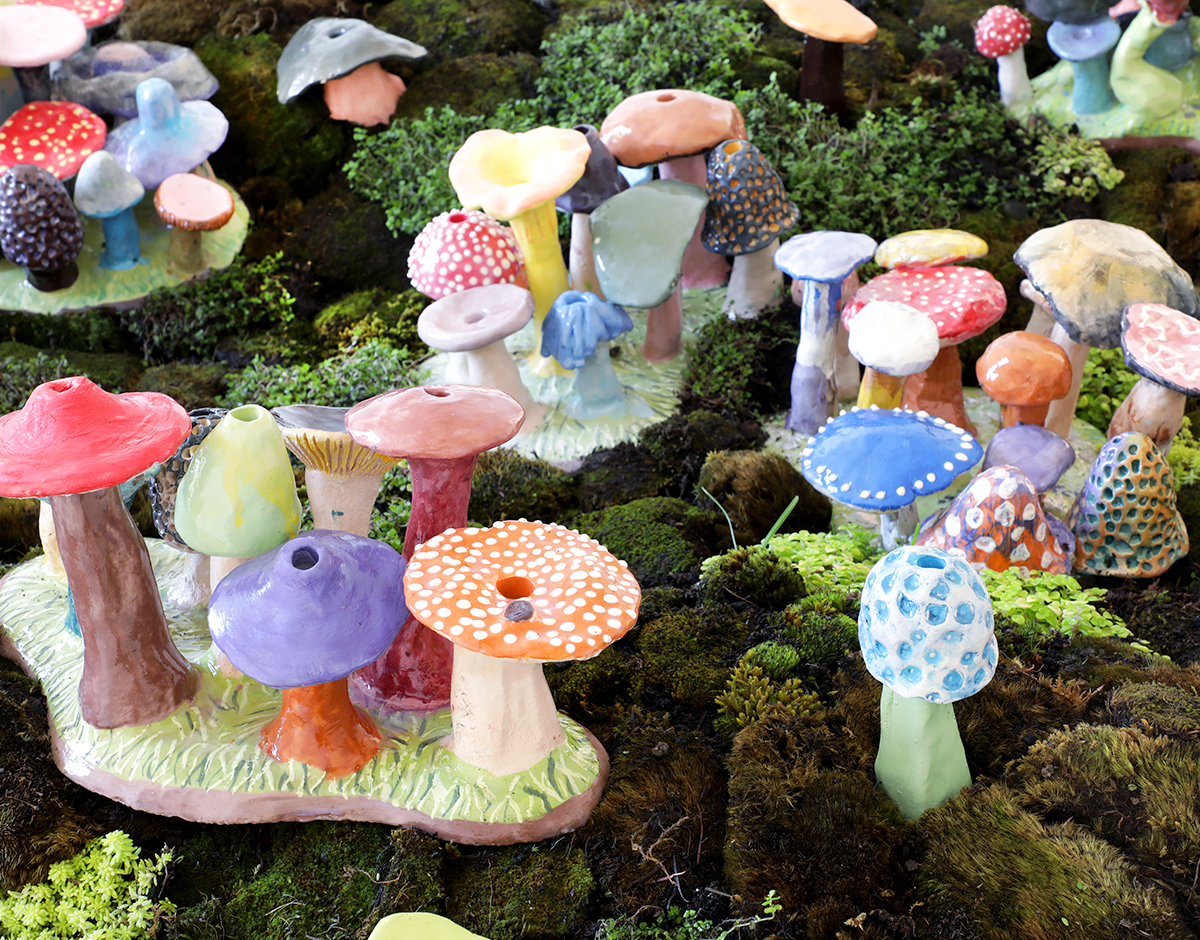
What’s your menorah-making process? There are so many different mushrooms! Do you ever reference any mushroom books, or are they all made up out of thin air?
Each menorah starts out as a little forest pad and then they grow from there. They look architectural to me, like a small city. I want them to have a balance, but also be very bright and exciting. I remember this feeling of being so excited to light the candles on the first night of Chanukah, and I want to share that experience — like being a kid in a candy store, you know it’s going to be a good time.
They’re all based loosely on real mushrooms, but I also break free from that into the realm of the fantastic. I have a couple of books around for inspiration, like Audubon’s North American mushrooms and Peterson’s field guide, and some posters on the wall. There are so many different species and varieties, you can really go deep with it.
Can you tell us more about your interest in the California Clay Movement?
In Los Angeles during the 1960s, artists like Peter Voulkos, John Mason, Ken Price, Nancy Selvin, and many others tried to elevate ceramics from craft to a fine arts context. They were pretty successful with that, and now you have this super vibrant scene here. When I first moved to L.A. it seemed like every artist I met had a kiln and was experimenting with clay. I started going over to my friends’ studios and sculpting with them — it was all very social. There was a big weekly clay night with free clay, music, and wine at Laura Owens’s studio 356 Mission. Finally I got my own kiln, and now it’s become a pretty big part of what I do.
Are there any Jewish stories in particular that informed the series?
For a while now, I have been interested in ideas from Jewish mysticism and how they relate to psychedelia. Judaism was founded on what some might describe as a psychedelic experience: Moses seeing a burning bush that is never consumed by the flames, from which he receives the ten commandments. Then the Israelites found manna in the desert that some people think could have been a psychedelic fungus. But the connection to me is more symbolic. I think the legend of Chanukah is really about magic, and so I try to put a little magic into each one of them.
How do your ceramics relate to your paintings? Obviously some of the ceramics are more canvas-like, but then the mushrooms are their own representations.
I work in a lot of different mediums: painting, sculpture, installation, and ceramics. I usually have three to five different series going simultaneously, which keeps me very busy and engaged in the studio. For example I have a series of portraits for when I meet a new person who’s inspiring, a series of charcoal drawings for when I read something in the news that haunts me, surrealist landscapes to describe a beautiful phenomenon encountered in nature, and ceramic memory maps to tell a story of space and time. Regardless of the medium, they each represent one part of my story — who I am, and my experience of being a human today. ◆
